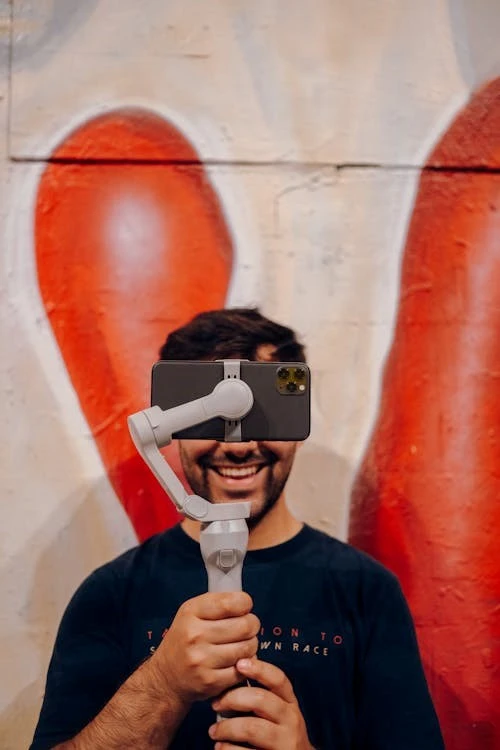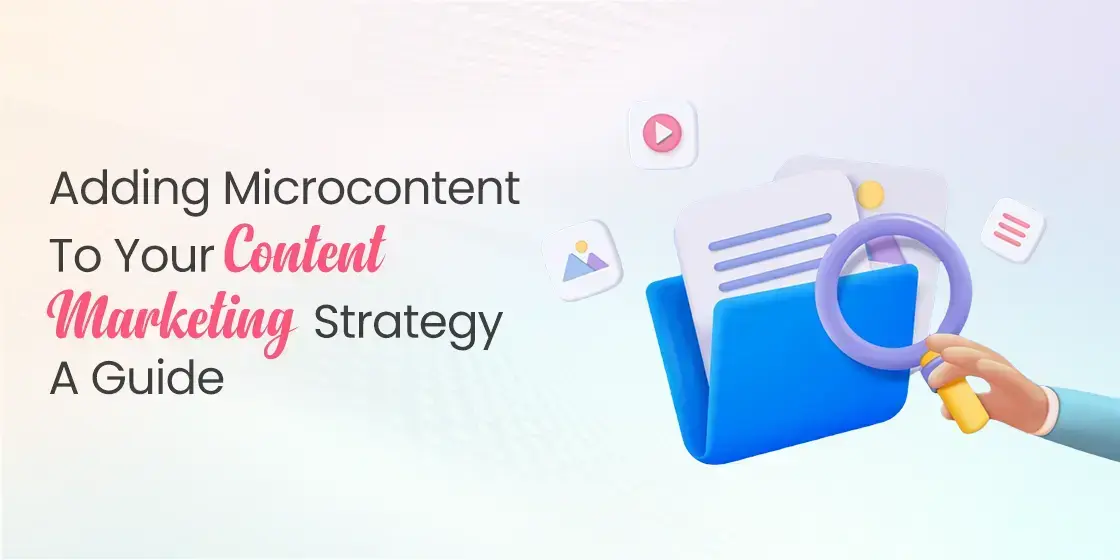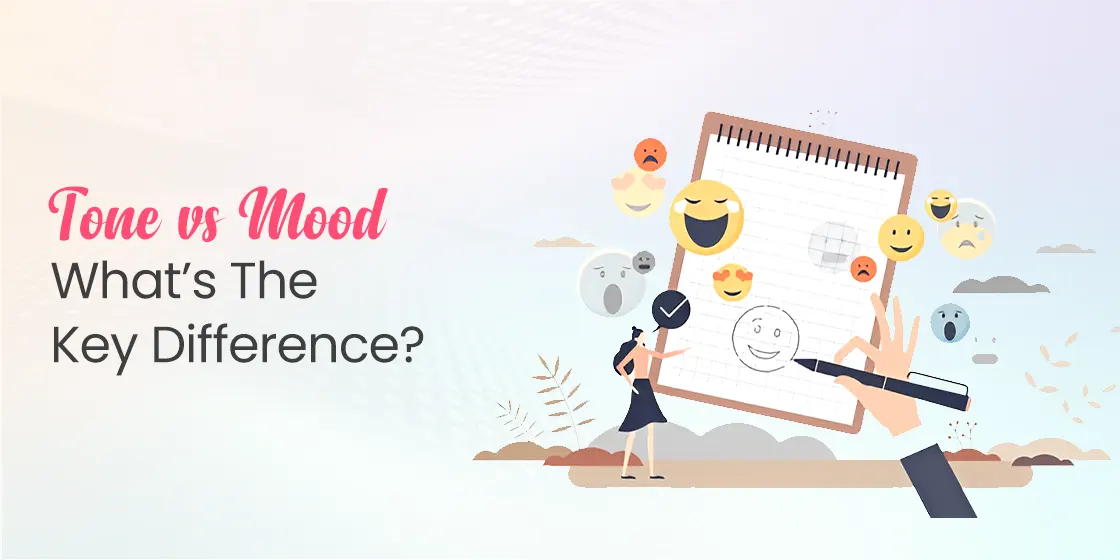Table of Content
Discover the Important and Prominent Role Microcontent Plays in Your Content Strategy
Capturing and holding the attention of your audience can feel like a constant uphill battle these days. The rise of social media, with its short attention spans and constant stream of information, has made it increasingly challenging to cut through the noise and effectively communicate your brand’s message. This is where microcontent comes into play.
Microcontent refers to small, easily digestible pieces of content designed for quick consumption. Unlike long-form blog posts or in-depth reports, microcontent focuses on delivering key messages in a concise and impactful manner. Think short, attention-grabbing snippets of information that can be easily consumed on-the-go. In this era of information overload, microcontent has emerged as a powerful tool for engaging audiences, building brand awareness, and achieving marketing goals.
The rise of social media platforms like Twitter, Instagram, and TikTok has further fueled the growth of microcontent. These platforms thrive on short, attention-grabbing content, such as tweets, short videos, and engaging visuals. By embracing microcontent, businesses can effectively leverage these platforms to connect with their target audience, build brand loyalty, and drive engagement.
Let’s take a look at the world of microcontent in greater detail, and discover why web copywriting services are increasingly opting to add it to their strategy these days.
Explaining Microcontent – What is It and Why Do You Need It These Days?

As the name suggests, microcontent refers to small pieces of content that portray a single, specific message fulfilling a single purpose. If you take content examples such as blogs, articles, long videos, podcasts, and more, you will see that they require a sizable time investment from the consumer. And with shorter attention spans becoming the norm in the newer generations of content consumers, long-form content is fast losing its appeal for the masses in the long-form vs short-form content debate.
Now, you might believe that adding microcontent to your content strategy may make it kind of one-dimensional and boring. However, that is not true. Microcontent encompasses a wide range of interesting and versatile short-form content formats, including:
- Social Media Posts: Tweets, short videos (TikTok, Instagram Reels), Instagram Stories, Facebook posts, and short, engaging captions.
- Images and GIFs: Eye-catching visuals, memes, and GIFs that convey a message quickly and effectively.
- Short Videos: Brief explainer videos, product demos, and behind-the-scenes glimpses.
- Quotes and Testimonials: Short, impactful quotes from industry experts or customer testimonials.
- Infographics and Data Visualizations: Concise and visually appealing presentations of data and information.
- Short, Engaging Articles: Brief blog posts, listicles, and articles that focus on a single, concise topic.
- Email Subject Lines: Catchy and intriguing subject lines that encourage email opens.
- Headlines and Titles: Compelling headlines that grab attention and entice readers to click.
As you can see in the various types of microcontent mentioned above, all fulfill a specific brief – each type is short, simple, to the point, and shareable. Therefore, we can say that the key characteristics of effective microcontent are:
- Conciseness: It delivers key messages in a brief and to-the-point manner.
- Clarity: It is easy to understand and grasp quickly.
- Engaging: It captures attention and sparks interest.
- Shareability: It is easily shareable across various social media platforms.
- Relevance: It is relevant to the target audience and aligns with brand messaging.
Why is Microcontent an Essential Part of Content Strategy These Days?
With the world moving at such a fast pace these days, people rarely have the time to watch or interact with long-form content, which was why the COVID-19 lockdowns showed such a massive growth in streaming platforms and long-form content consumption. However, now with the world back at it again, and generations like Gen Z who grew up on social media entering the market as paying consumers, microcontent has become an essential part of content ideation for several reasons:
- Short Attention Spans: With the constant barrage of information, audiences have shorter attention spans. Microcontent caters to this reality by delivering information in easily digestible chunks.
- Increased Engagement: Short, engaging content is more likely to capture attention and drive engagement on social media platforms.
- Improved Brand Visibility: By consistently sharing high-quality microcontent, businesses can increase their brand visibility and reach a wider audience.
- Cost-Effectiveness: Creating and distributing microcontent can be relatively cost-effective compared to other marketing efforts.
- Enhanced SEO: Microcontent can improve search engine optimization (SEO) by increasing brand visibility and driving traffic to your website.
By incorporating microcontent into their marketing strategies, businesses can effectively connect with their target audience, build brand awareness, and achieve their marketing goals in a dynamic and engaging way.
Social Media and Microcontent – How Do They Go Hand-in-Hand?

Social media platforms are the ideal breeding ground for microcontent. These platforms thrive on short, attention-grabbing content, from social media copywriting to video content that is easily consumed and shared. Here’s how different social media platforms can integrate microcontent into their strategies:
- X (Formerly Twitter): With its 280-character limit, X is the quintessential platform for microcontent. Tweets, short videos, and engaging images are perfectly suited for this platform.
- Instagram: Instagram is a visual-centric platform that thrives on high-quality images and short, engaging videos. Stories, Reels, and visually appealing posts are highly effective forms of microcontent on Instagram.
- TikTok: This platform is synonymous with short-form video content. TikTok provides a powerful platform for businesses to create engaging and entertaining videos that can quickly go viral.
- Facebook: While Facebook supports longer-form content, microcontent such as short videos, engaging images, and concise updates can effectively capture attention and drive engagement.
- LinkedIn: Microcontent like short articles, industry insights, and engaging employee stories can be effectively used to build thought leadership and connect with professionals on LinkedIn.
By understanding the unique characteristics of each platform and tailoring your microcontent accordingly, you can effectively leverage social media to reach your target audience and achieve your marketing objectives.
Types of Microcontent You Can Incorporate Into Your Strategy

As we discussed earlier, microcontent encompasses a wide range of formats, each with its own unique strengths and applications. For an effective microcontent strategy, you need to incorporate various types of microcontent into your rotation, rather than one single type. By experimenting with different formats and finding what resonates best with your audience, you can create a diverse and engaging microcontent strategy.
Now, the various types of microcontent available to us can be broadly categorized into three mediums – textual, video, and audio. Let’s take a more detailed look at them below.
Text-Based Microcontent:
- Tweets: Short, concise messages that can be used to share news, updates, and engage with followers.
- Instagram Captions: Short and engaging captions that accompany your images and videos.
- Quotes and Testimonials: Short, impactful quotes from industry experts or customer testimonial advertising.
- Headlines and Titles: Compelling headlines that grab attention and entice readers to click.
- Short Articles and Listicles: Brief articles and listicles that focus on a single, concise topic.
Visual Microcontent:
- Images: High-quality images, infographics, and memes that convey your message visually.
- Short Videos: TikTok videos, Instagram Reels, short explainer videos, and behind-the-scenes glimpses.
- GIFs: Animated GIFs that add a touch of humor and personality to your content.
Audio Microcontent:
- Short Audio Clips: Sound bites, voiceovers, and short audio clips that can be shared on platforms like TikTok and Instagram.
- Podcasts (Short Episodes): Short, focused podcast episodes that deliver valuable information in a concise and engaging format.
Repurposing Long-Form Content Into Microcontent

One of the most effective ways to leverage microcontent is to repurpose existing long-form content. By breaking down longer pieces of content into smaller, more digestible chunks, you can increase its reach and engagement.
Here are some effective ways to repurpose long-form content into microcontent:
- Extract key quotes and statistics: Share these as standalone social media posts or in your email newsletters.
- Create short video clips: Summarize key takeaways from blog posts or articles in short, engaging video clips.
- Turn blog posts into a series of shorter articles or listicles.
- Create infographics and data visualizations: Visualize key data and insights from your long-form content.
- Develop a series of short social media posts that build upon a larger theme or topic.
By repurposing existing content, you can maximize its reach and impact while minimizing the time and effort required to create new content.
Why You Should Consider Microcontent an Important Part of Your Content Strategy?

In today’s fast-paced digital landscape, microcontent has become an indispensable part of any successful content marketing strategy. It offers numerous benefits, including:
- Increased Engagement: Microcontent is designed to capture attention and drive engagement. Short, attention-grabbing content is more likely to be shared, liked, and commented on by your audience.
- Improved Brand Visibility: By consistently sharing high-quality microcontent, you can increase your brand visibility across various social media platforms and other digital channels.
- Enhanced Brand Awareness: Microcontent helps to build brand awareness by consistently reminding your audience of your brand and its message.
- Improved SEO: By incorporating relevant keywords and hashtags into your microcontent, you can improve your search engine optimization (SEO) and increase your visibility in search results.
- Cost-Effectiveness: Creating and distributing microcontent can be relatively cost-effective compared to other marketing efforts.
- Increased Lead Generation: By strategically using microcontent to capture leads, such as email addresses or phone numbers, you can build your customer base and drive revenue.
By incorporating a robust microcontent strategy into your overall marketing plan, you can effectively connect with your target audience, build brand awareness, and achieve your business goals in today’s dynamic digital landscape.
FAQs
| What are some of the most popular platforms for microcontent these days? For 2025, the most popular microcontent platforms include: YouTube shorts TikTok Snapchat Instagram Reels |
| What is a micro vlog/blog? Microblogging is a type of microcontent that is typically designed for quick and direct interactions with your audience. |
Conclusion
In conclusion, microcontent has emerged as a critical component of any successful digital marketing strategy. By embracing short, engaging content formats and leveraging the power of social media, businesses can effectively connect with their target audience, build brand awareness, and achieve their marketing objectives.
By understanding the principles of microcontent and implementing a well-defined strategy, businesses can navigate the complexities of the digital world and thrive in today’s fast-paced and ever-evolving marketplace.

Unleash your brand story`s potential with eContentSol – your creative writing companion. We craft narratives that captivate. Ready to elevate your content game? Dive into creativity with us and let`s bring your ideas to life.


